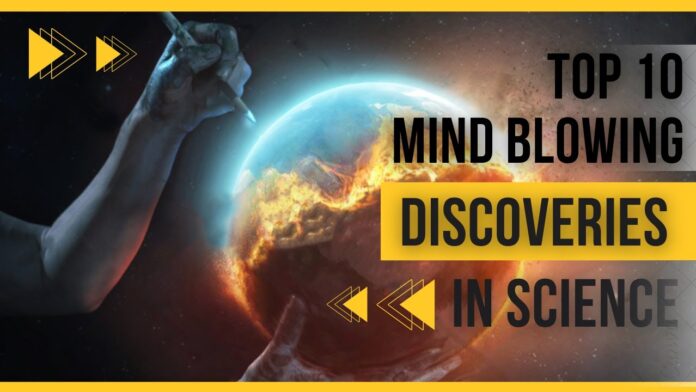Introduction
Science is an incredible journey into the wonders of our universe, and there’s no better way to ignite a child’s curiosity than with mind-blowing facts that capture their imagination. Whether they’re fascinated by the stars, intrigued by the animal kingdom, or curious about how things work, these ten amazing science facts are sure to leave them awestruck and eager to learn more. Dive into these exciting snippets of scientific knowledge and watch as their interest in the world around them soars.
1. The Ocean is Deeper Than You Think
Did you know that the deepest part of the ocean, the Mariana Trench, is about 36,000 feet deep? That’s like stacking more than 6 Empire State Buildings on top of each other! If Mount Everest, the tallest mountain in the world, were placed in the Mariana Trench, its peak would still be over a mile underwater. The ocean is so vast and mysterious that scientists are still discovering new species living in these extreme depths.
2. Honey Never Spoils
Imagine finding a jar of honey that’s thousands of years old and still perfectly edible. It might sound like magic, but it’s true! Honey has natural preservatives and low moisture levels that prevent bacteria from growing. Archaeologists have even found pots of honey in ancient Egyptian tombs that are still fit for consumption. Talk about a sweet discovery!
3. A Day on Venus is Longer Than a Year on Venus
Venus has an incredibly slow rotation, taking about 243 Earth days to complete one rotation. However, it takes only about 225 Earth days for Venus to orbit around the Sun. This means that a single day on Venus is actually longer than its year! Venus is also one of the hottest planets in our solar system, with surface temperatures hot enough to melt lead.
4. There Are More Stars in the Universe Than Grains of Sand on All Earth’s Beaches
The universe is vast beyond comprehension, and astronomers estimate that there are around 100 billion galaxies, each containing millions or even billions of stars. If you tried to count all the grains of sand on Earth’s beaches and compare them to the number of stars in the universe, the stars would vastly outnumber the grains of sand. The sheer scale of the cosmos is truly staggering!
5. The Eiffel Tower Grows in the Summer
Did you know that the Eiffel Tower can grow up to 6 inches taller in the summer? The iron structure of the tower expands when heated by the sun’s rays, causing it to grow slightly. When the temperature drops, the iron contracts, and the tower returns to its original height. This fascinating phenomenon showcases the effects of thermal expansion.
6. A Single Bolt of Lightning Contains Enough Energy to Toast 100,000 Slices of Bread
Lightning is an electrical discharge that carries an enormous amount of energy. In just one lightning bolt, there can be up to 1 billion volts of electricity, which is enough to power about 100,000 slices of toast. This powerful force of nature is both awe-inspiring and a reminder of the raw power present in our natural world.
7. The World’s Largest Volcano is Underwater
Mauna Loa, located in Hawaii, is the largest volcano on Earth when measured from its base to its peak. However, more than half of its massive structure is submerged under the ocean. When considering its underwater portion, Mauna Loa is even larger than Mount Everest. This underwater giant continues to be an active and fascinating part of our planet’s geology.
8. Your Body Has Enough Iron to Make a Small Nail
The human body contains a small amount of iron, which is essential for carrying oxygen in your blood. If you could extract all the iron from your body, you would have enough to make a small nail. This tiny but crucial mineral plays a significant role in keeping you healthy and strong.
9. The Shortest War in History Lasted Only 38 Minutes
The Anglo-Zanzibar War of 1896 holds the record for the shortest war ever fought. It lasted only 38 minutes between the British Empire and the Sultanate of Zanzibar. This brief but intense conflict is a remarkable piece of history that highlights the unusual and sometimes unexpected events that have shaped our world.
10. You Can Fit All the Planets in Our Solar System Between Earth and the Moon
The average distance between Earth and the Moon is about 238,855 miles. Interestingly, if you lined up all the planets in our solar system—Mercury, Venus, Earth, Mars, Jupiter, Saturn, Uranus, and Neptune—they would fit comfortably within this distance. This fact puts into perspective just how vast space is and how small our planetary system can seem in the grand scheme of the universe.
Conclusion
These ten science facts are just the tip of the iceberg when it comes to the wonders of the world around us. By exploring these amazing snippets of knowledge, kids can spark their curiosity and develop a lifelong love for science. Each fact opens up a world of discovery and encourages young minds to ask questions, seek answers, and explore the incredible universe we live in.





